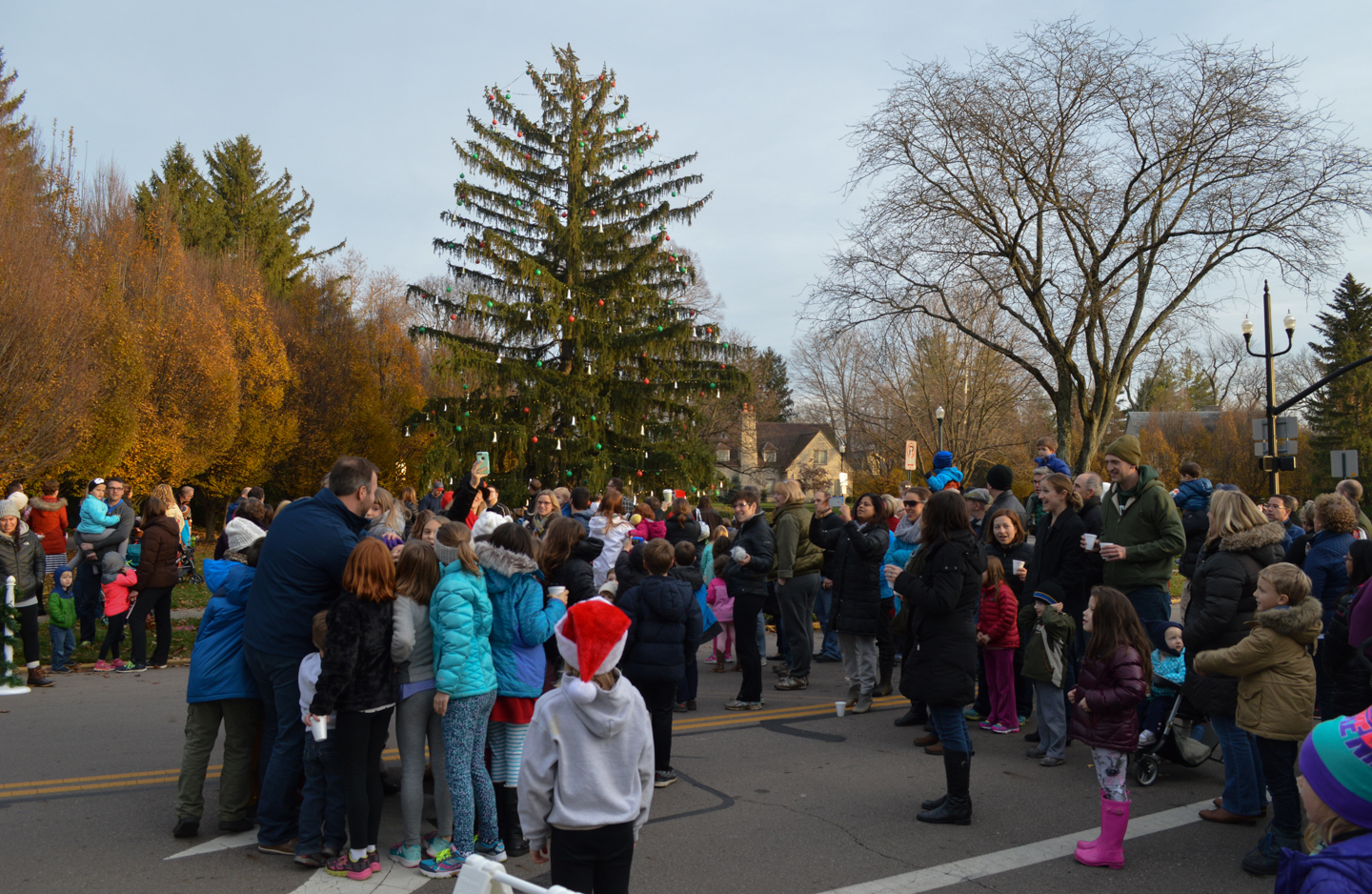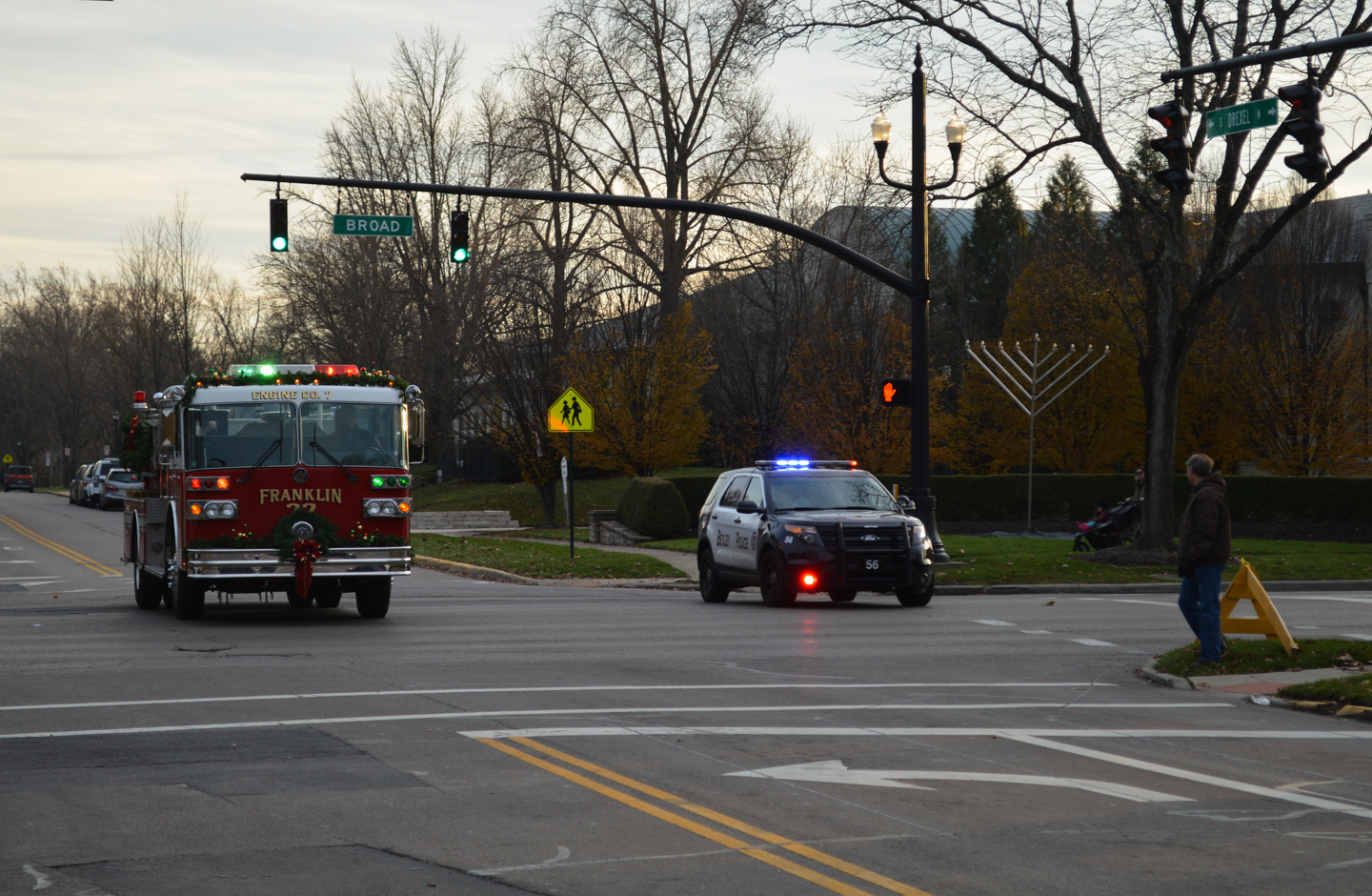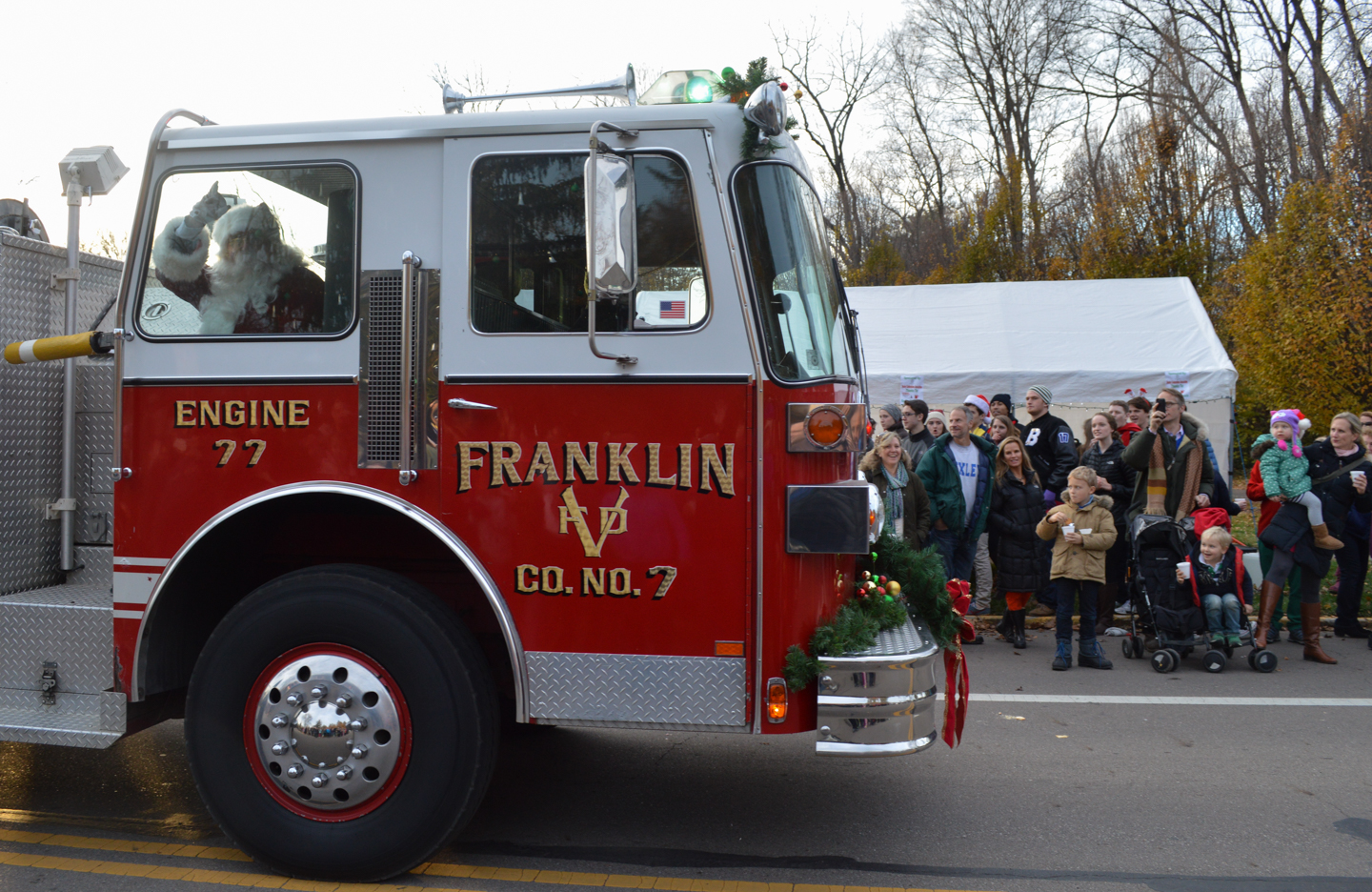



The 2015 annual tree lighting ceremony in Bexley, OH.
Sounds of the Christmas Season
By Isaac Weiner
In the weeks leading up to Christmas, religious, civic, and consumer activities frequently overlap, and they often do so in the public sphere. This intersection is strikingly audible and alludes to Christianity’s complex role in American society.
For example, in Bexley, Ohio, a picturesque Columbus suburb, the public gathers for an annual Christmas tree-lighting ceremony at the corner of East Broad Street and Drexel Avenue. During the 2015 event, traffic was blocked as the Bexley High School Vocal Ensemble led the crowd in caroling, punctuated by the sounds of jangling keys during “Jingle Bells.” After a communal countdown, Bexley Mayor Ben Kessler pushed down on a detonator to light the giant Christmas tree. But the real climax came when Santa Claus entered the scene on the back of a fire truck, lights flashing and sirens blaring, eliciting both cheers and tears from some of the younger people in the crowd, many of whom then lined up for a turn on his lap. This lighthearted event combined religious and civic themes in surprisingly complex ways.
In the nearby Easton Town Center, one of Columbus’ busiest shopping malls, the sounds of Christmas music and sleigh bells overlap with the bustling of holiday shoppers. The materialistic aspects of Christmas have generated controversy among many American Christians. For some, the emphasis on commercialism detracts from the “true” meaning or spirit of the holiday. For others, especially for those who perceive a concerted “war on Christmas,” the failure of American businesses to properly recognize the Christmas season might itself be cause for outrage.
Christmas displays like these have been occasions of good cheer and heated debate. The ubiquitous presence of trees, carols, and other visual and auditory markers of the Christmas season speak to the pervasive force of Christianity in shaping the affective qualities of American public culture. In an effort to recognize and celebrate American pluralism, some cities have sought to incorporate symbols of other religious traditions into their displays, such as a Hanukkah menorah or dreidel. When faced with opposition, civic officials also have been quick to characterize Christmas trees as “cultural” or “secular” symbols, rather than religious ones. But such lines are not always so clearly drawn. Just as multiple sounds might come together and intersect on the same city street corner, so too do the religious and the secular have a funny way of overlapping. Our different responses to these public displays and sounds says something important about our competing understandings of who we are as Americans.
Audio recording and photography by Isaac Weiner
Exhibit design and production by Lauren Pond

